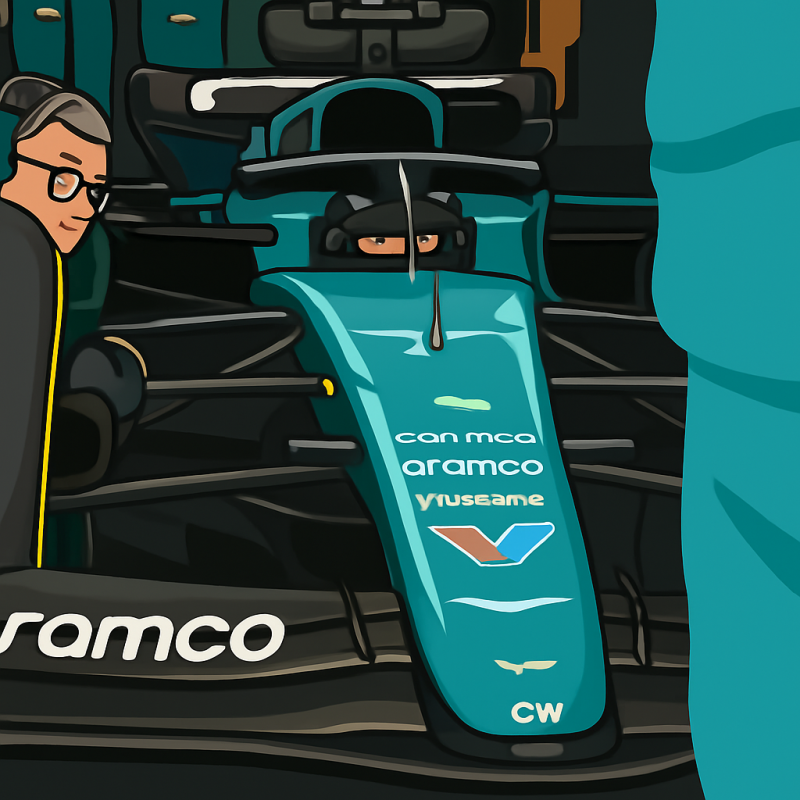Deagen Fairclough gets first taste of F1 with Aston Martin’s AMR23 at Silverstone
GB3 runner Deagen Fairclough has ticked off a very big first. The 18-year-old Brit climbed into Aston Martin’s 2023-spec AMR23 at Silverstone last week, cashing in the prize drive that comes with winning the 2024 BRDC Young Driver of the Year Award.
It was Alonso’s old office — the car that bagged a stack of podiums in 2023 — and Fairclough made no secret of how much that mattered. He’d done the seat fit the day before, put in the neck training beforehand, and then found out what real downforce feels like the moment he hit the brakes.
“The first time I stopped the car, I had to reset what I thought was possible,” he said afterwards, still sounding a touch stunned. He talked about the power delivery being immediate, the braking being savage, and the speed through high-load corners — especially at Silverstone — being on another planet compared to GB3. Copse, flat. In a GB3 car, that’s a lift or a dab of brake; in an F1 machine, you just commit and hang on. It’s the classic first F1 test revelation, but it never gets old when a young driver says it out loud.
Fairclough earned this outing the hard way. His rise was unconventional even by modern standards: years in karting, then a springboard from an F4 esports competition backed by ROKiT into a real British F4 seat. He finished third in 2023 with three wins, dominated the category the following season, and stepped into GB3 for 2025 with momentum to burn. The BRDC award handed him £200,000 and, crucially, the path to Aston Martin’s door.
Silverstone was more than a thrill; it was an education. The jump from a Tatuus GB3 car to a current-era F1 chassis is not just about speed, it’s about systems and detail. Fairclough came away talking as much about process as performance — learning how and when to release the brake to let the aero work, the discipline of gear usage, and the fact that there are far more people around you measuring everything you do. That’s new for most youngsters. In junior series you talk to your engineer; in F1 you’ve got specialists pulling strings from every corner of the garage, all wanting a specific thing at a specific time. It can be overwhelming if you let it. He didn’t.
Physically, he said he held up well through the day. Mentally, the recalibration was the trick. Trust the car, trust the grip, trust the data. Do Copse without blinking. He called it “an eye-opener” and admitted he’s still processing it days later.
For Aston Martin, there’s value in these days too. The AMR23 remains a handy yardstick for young drivers and a clean platform for the team to assess potential without eating into current testing freedoms. For the BRDC and the British driver pipeline, this is exactly the point: put promising talent in front of a top operation and see what happens.
What happens next for Fairclough is more familiar: back to GB3, armed with a new reference for what “flat-out” really means. His 2026 plans aren’t set, but sessions like this tend to accelerate conversations. They also sharpen focus. Once you’ve felt F1 braking zones and the car pins you through a place like Maggotts and Becketts, it’s hard to think small again.
He didn’t try to dress it up. “It makes me want it more,” he said. Not a bad takeaway from a Thursday at Silverstone.




